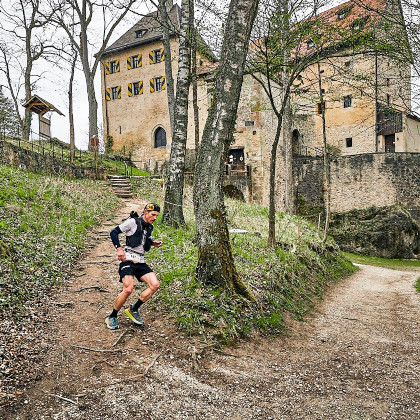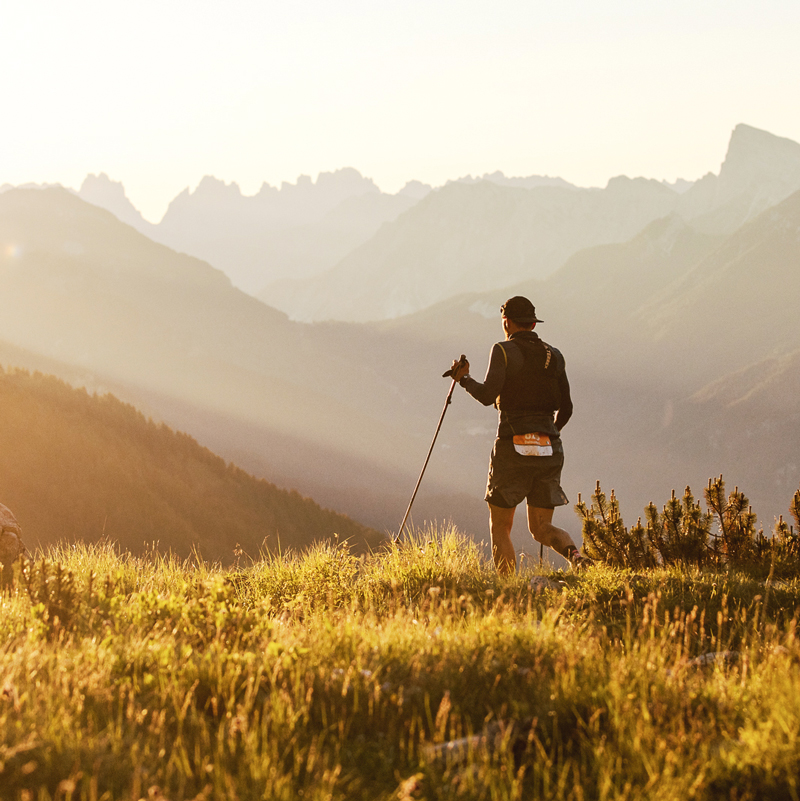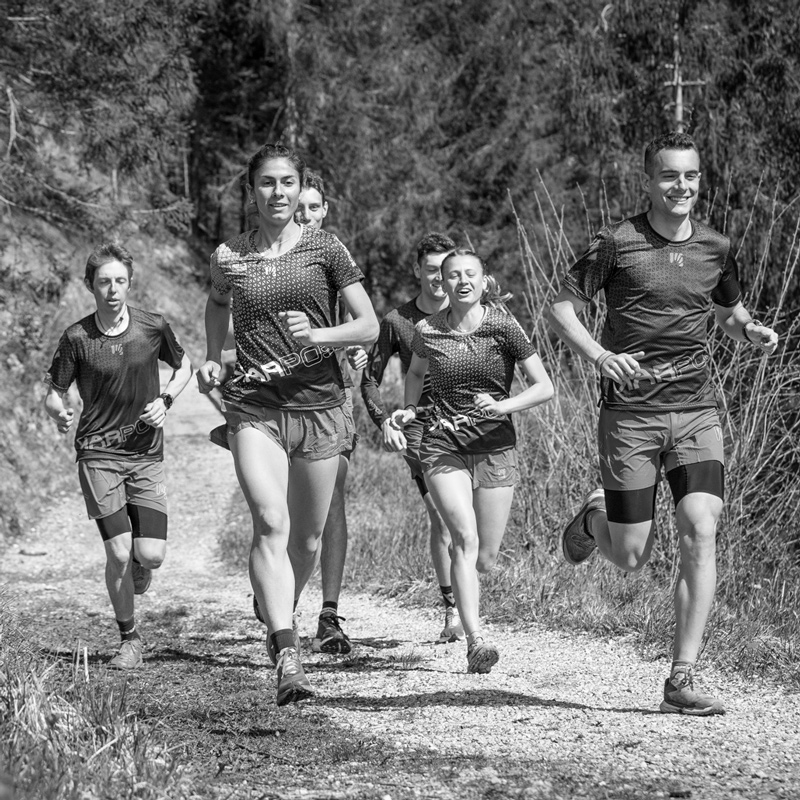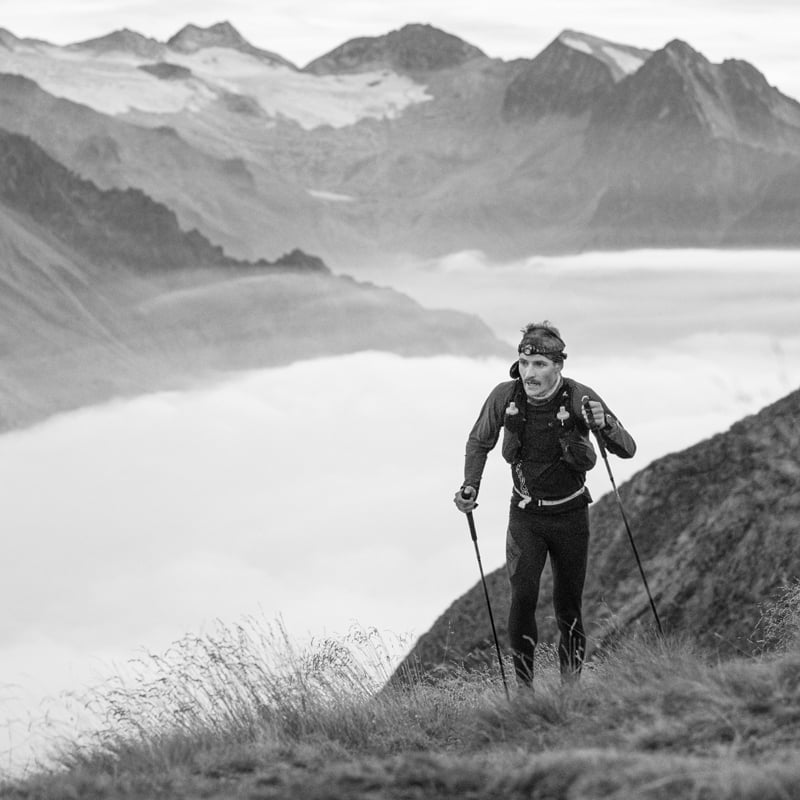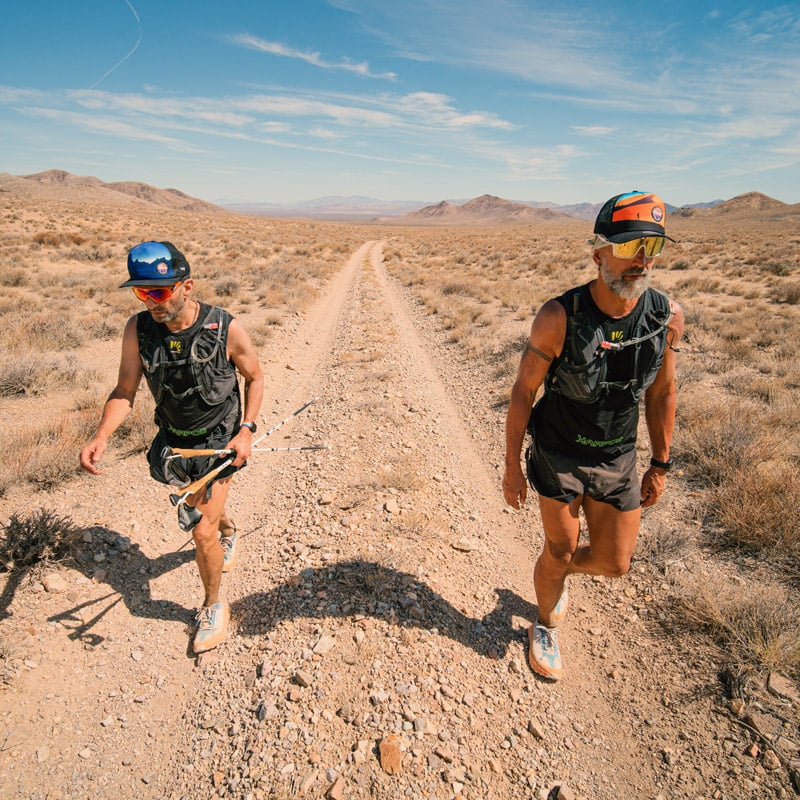
A CHALLENGE IN EXTREME TEMPERATURES
“Temperatures that cook eggs.” Stefano Gregoretti repeats it several times, thinking back to Death Valley, one of the driest and hottest places on the planet. An expanse of dust and rock that extends for 13,518 square kilometers in the American West. We’re at 86 meters below sea level, in a place where summer temperatures reach 50 degrees daily, with peaks exceeding 54. Only at night can you find respite, when the sun descends below the horizon and the temperature drops by about 13 degrees.
No one would ever think of going to an area like this, if not in a car and with the air conditioning at full blast. No one, that is, except the ultrarunner Stefano Gregoretti and his partner Ray Zahab, who in early July 2022 chose to do something completely crazy: cross Death Valley from east to west, running, without stopping. It wasn’t the two athletes' first experience of this type; they’re used to putting themselves to the test in extreme weather conditions. Over the years they’ve completed crossings of some of the least hospitable environments on the planet, from Kamchatka, to the cold polar lands, to the driest places on earth.
On this latest adventure they took only the essentials: a pair of shorts, a shirt, a headband, a small backpack, and lightweight running shoes. They faced 134 kilometers of desert, to be covered day and night, following a straight imaginary line. “We wanted adventure, so we decided to leave the well-trodden paths and roads.” A line in the wild, in search of their limits and a way to overcome them. Perhaps also an answer to the many questions that fill your brain when you imagine and carry out something like this: Why? “They often ask me, and every time I have to stop and force myself to reflect on the reasons that push me toward experiences of this type,” Stefano explains. “The honest answer is that I don’t know. It’s just something you do. You don’t always need a reason to do something. Not everything has to be clear and defined always. Then you’d risk not feeling wonder in the face of the unexpected, of not feeling excitement in the face of such imposing nature.”
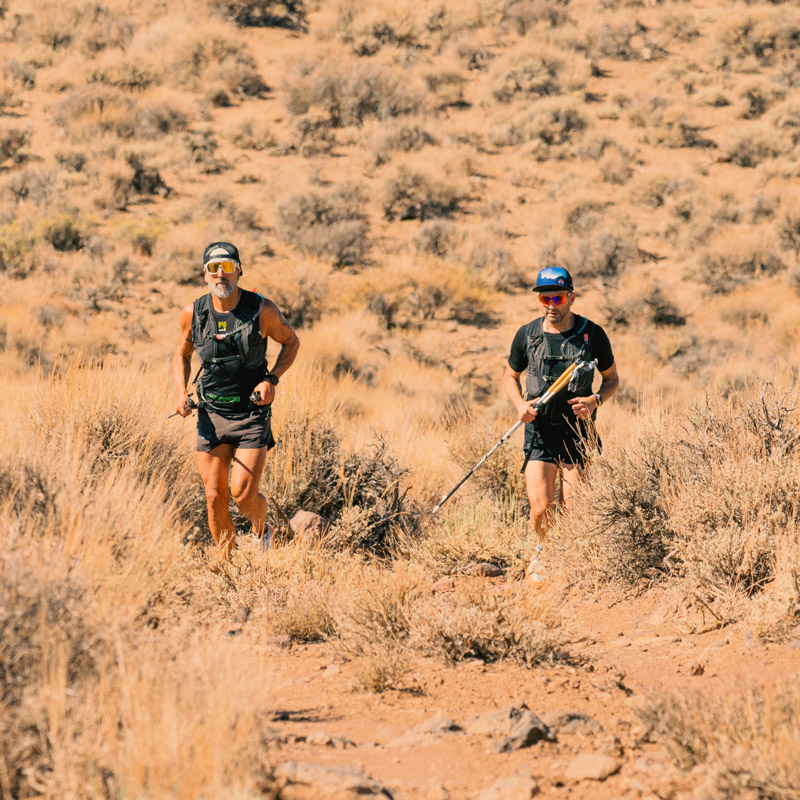

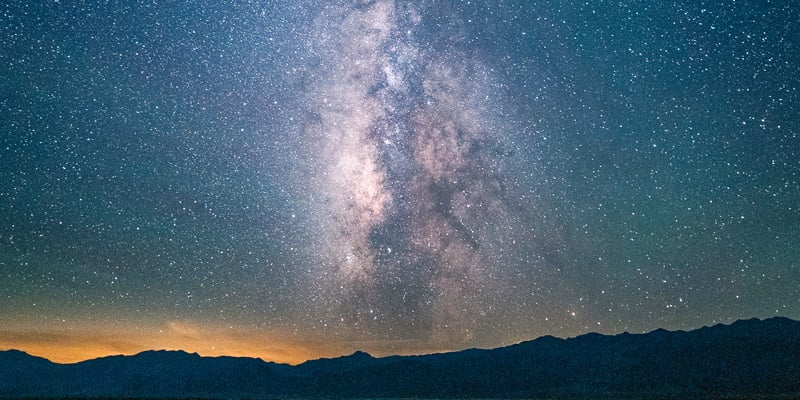

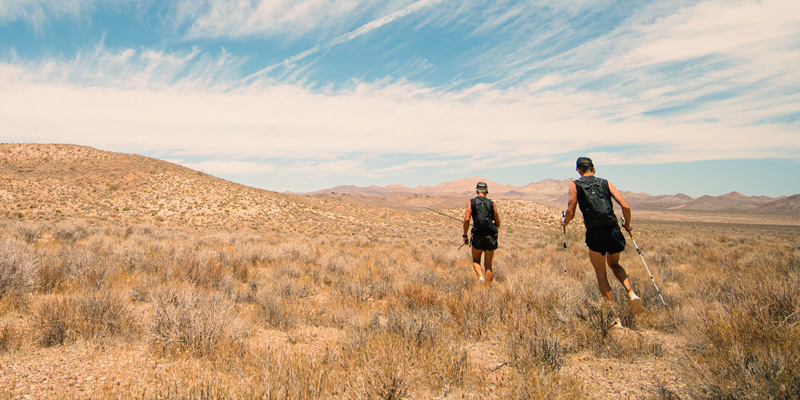
NON STOP
Thirty-four hours of continuous running allowed Stefano and Ray to go from one end of Death Valley to the other through canyons, scorching plains, and little-used tracks. “Without GPS it would have been very difficult to find our way,” Stefano says. But he’s certainly not the type who follows only the digital track. “If the connection fails or something breaks, you need to know how to get out of trouble ... and I couldn’t run all the time with the tracker in front of my eyes!” For this reason, before leaving, he and Ray performed a careful cartographic study, reviewing the track on paper, including contour lines, coordinates, and elevations. “At night, for the first time in my life, I used the stars to orient myself, like at sea. My reference was the North Star, which I kept slightly to the left of our direction of travel.” Then every 20 minutes, “to make certain, I checked the track.” In this way, digital navigation becomes a support for exploration, but it doesn’t replace the skills necessary to experience the wilderness. An environment so extreme that nothing can be left to chance. “Temperatures above 50 degrees are no laughing matter. Without water you’re finished.” Stefano and Ray each drank 40 liters of water, “more than a liter per hour each.”
To be able to meet this need for water, they organized the crossing by planning “life bases” every 20–25 kilometers. Points reachable by off-road vehicles where, in the days preceding the run, they placed supplies. “We chose the locations by estimating the time it would take to go from one point to another, always remembering that when you’re on the ground anything can happen.” In some places it took up to seven hours to cover 20 kilometers. “In these cases, you need to know how to limit yourself, because beyond what you have with you, you won’t find any other water.”
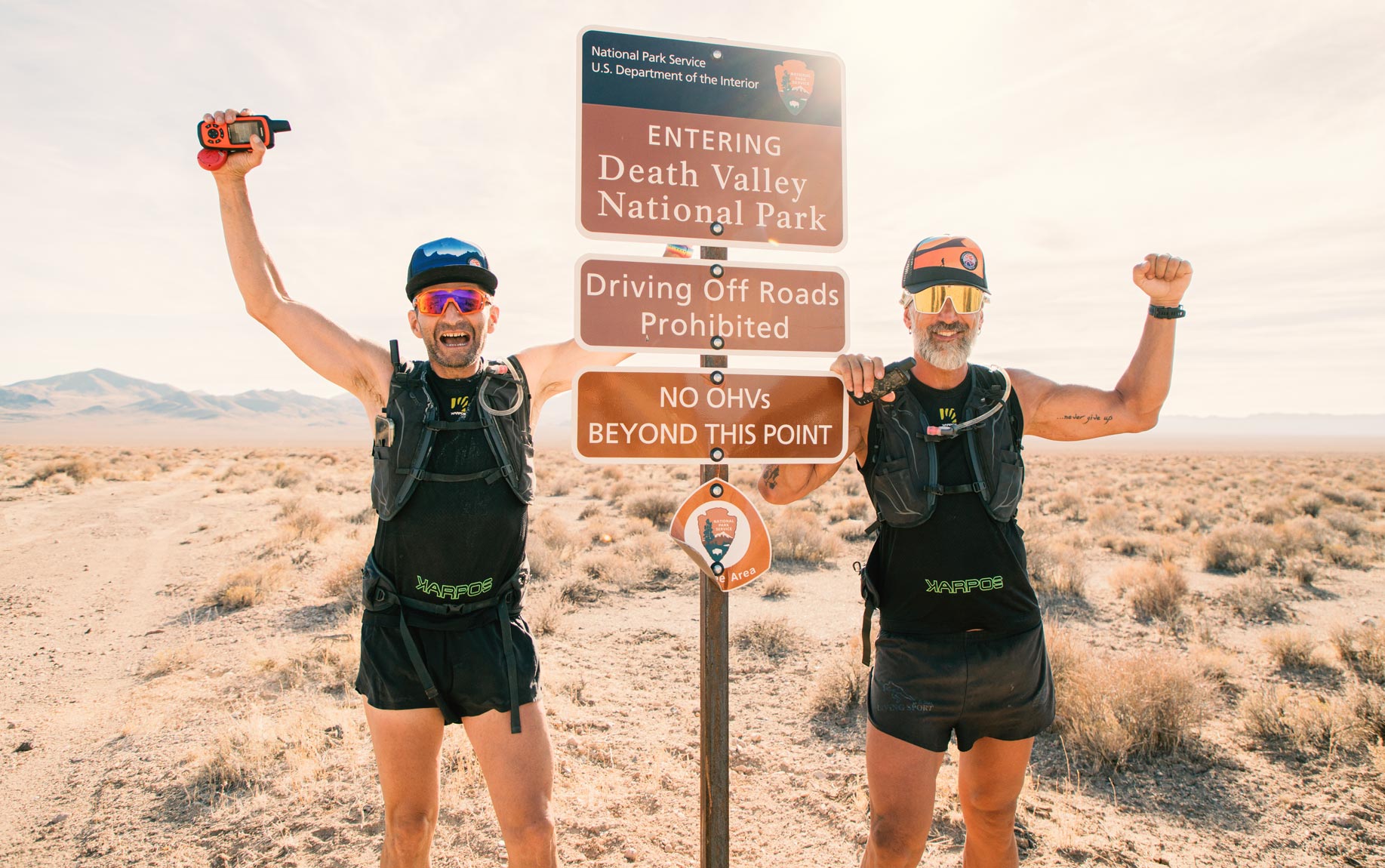
It’s impossible to think of wasting water to bathe your head and body in search of relief. The only way to be able to “stay cool” is to calculate everything beforehand. Study clothing and leave nothing to chance. A concept that’s already been expressed several times in this story, but that, better than any other phrase, is useful in explaining Stefano’s approach to the extreme.
“Despite applying SPF 50 over and over again during the day, I burned the right side of my body,” recalls Stefano. “With regard to clothing, the choice fell on shirts and shorts that would allow the skin to breathe.” In these conditions, it’s important to avoid tight-fitting clothing, explains Stefano. “I usually wear jerseys in size L, but this time I wore an XXL in order to create a ventilated space between the skin and the fabric. With a tight-fitting shirt I would have suffered much more from the heat, as if my skin were on fire.”
At the finish, a big smile and a water bath, finally. The incredible feeling of having completed something that you dreamed up and imagined on a warm midsummer night. Why? To push yourself further, to show that it’s possible, that your body can do incredible things if supported by the right mental preparation. But also because, yes, every now and then you have to stop thinking and do to feel truly alive.

